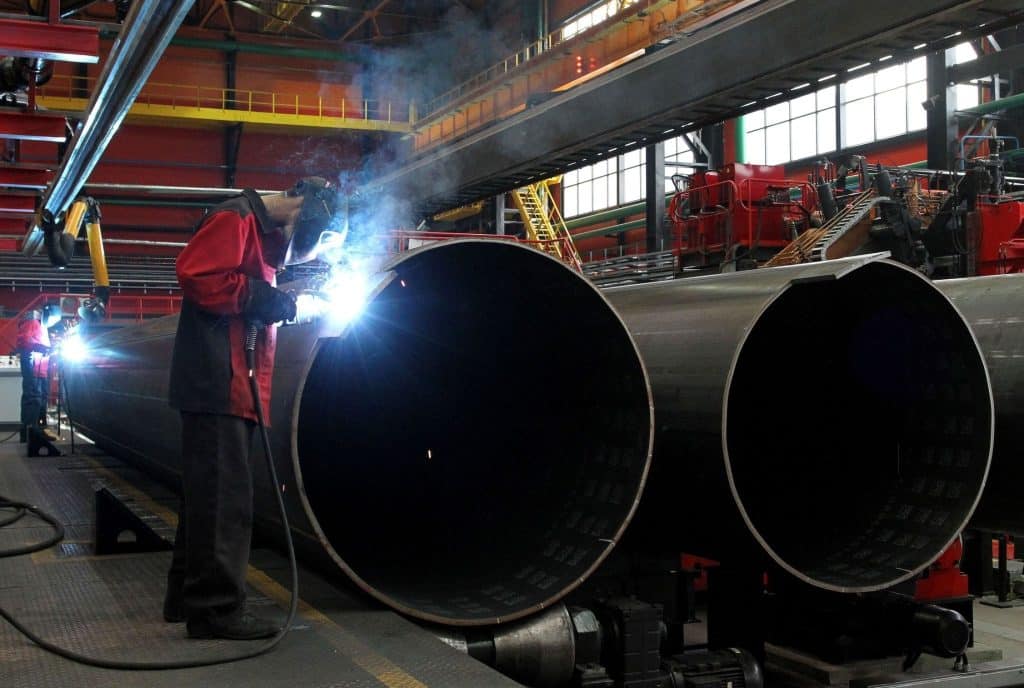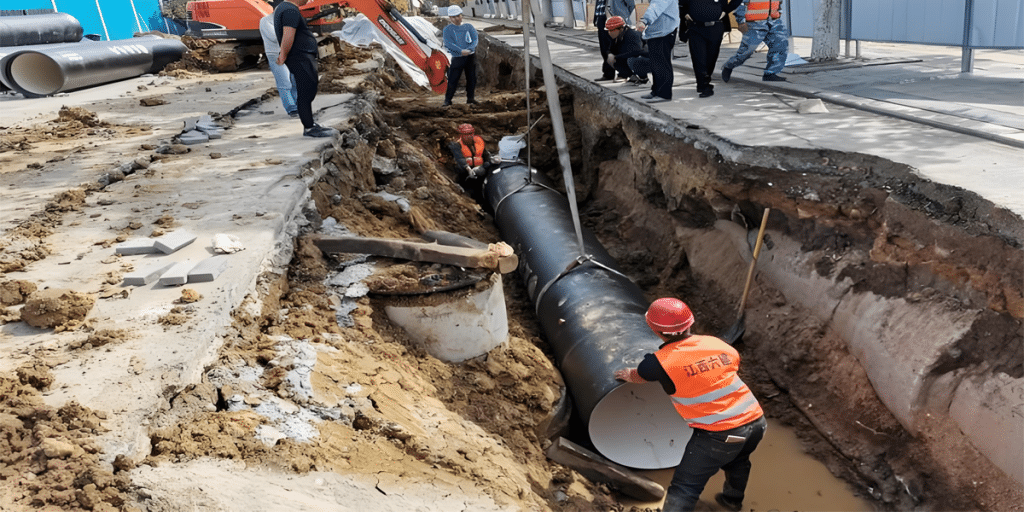- 1. Raw Material and Chemical Composition Control (The First Line of Defense in Quality)
- 2. Forming and Welding Processes: Different Control Points for ERW and LSAW
- 3. Key Testing and Experiments (Empirical Evidence for Performance Assurance)
- 4. Certificate of Delivery (MTC) and Traceability
- 5. Surface Treatment, Packaging, and Pre-Transportation Inspection
- 6. Our Recommendations (For Procurement/Engineering Teams)
- 7. LONGMA – Your Trusted ASTM A53 Pipe Partner
To ensure that ASTM A53 pipes meet project requirements and maintain long-term reliability, strict quality control and documentation must be implemented at every stage, including raw material control → precision forming and welding (ERW/LSAW) → heat treatment/finished product processing → non-destructive testing and mechanical testing → hydrostatic/seal testing → surface protection and packaging → traceability and certificate of delivery (MTC). Below is a detailed breakdown of each stage, along with specific bases and key implementation points.
Raw Material and Chemical Composition Control (The First Line of Defense in Quality)
- Procure qualified steel coils and plates (low sulfur, low phosphorus, and compliant with specified upper limits for chemical elements).
- Incoming inspection includes chemical composition analysis (spectroscopic/chemical analysis) and physical appearance inspection.
- All raw materials must have batch numbers for traceability, which should correspond to MTC documents.
Basis: ASTM A53 requires that delivered materials comply with specified chemical composition and manufacturing process categories, and raw material certificates are critical for qualifying products for delivery.
Forming and Welding Processes: Different Control Points for ERW and LSAW
- ERW (Electric Resistance Welding) – Control of Butt Joints and Forming
- The process involves: edge forming of steel coils → high-frequency/low-frequency electric resistance welding→weld shaping → heat treatment/straightening.
- Key control points: coil shape and flatness, welding current and speed, inspection of the weld heat-affected zone (HAZ), and detection of surface and internal defects (eddy current or ultrasonic partial testing is commonly used).
- LSAW (Longitudinal Submerged Arc Welding) – Plate and Weld Bead Quality Are Critical
- The process involves: uncoiling steel plates into a circular shape → longitudinal submerged arc welding (internal and external welding) → heat treatment of weld beads → end processing.
- Key control points: plate size and thickness uniformity, groove machining accuracy, metallurgical quality of weld beads, and control of residual stress.
(ERW and LSAW differ fundamentally in raw materials, applicable diameters, wall thicknesses, and welding methods, so production control focuses on different aspects.)
Key Testing and Experiments (Empirical Evidence for Performance Assurance)
| Testing Item | Purpose | Description / Requirements |
| Chemical Composition Analysis | Verify that material composition meets standards | Re-inspection of incoming materials and batches |
| Tensile/Yield/Elongation Tests | Validate mechanical properties | Test in accordance with ASTM/industry sampling requirements |
| Flattening/Crushing/Bending Tests | Check ductility and laminar defects | Common inspection methods for ASTM A53 |
| Ultrasonic/Radiographic Testing (UT/RT) | Detect internal defects | Mandatory testing for critical areas of welds and plates |
| Hydrostatic Test | Verify pipe tightness and pressure resistance | ASTM A53 specifies minimum test pressures for different diameters with required minimum holding times (common requirements: For NPS ≤ 3, minimum 2500 psi; for NPS > 3, minimum 2800 psi, with a holding time of at least 5 seconds). |
The above tests include both non-destructive testing (NDT) and destructive mechanical tests; a combination of both is required to provide comprehensive quality certification. For details on the implementation of common tests and sampling methods, manufacturers typically follow ASTM specifications and internal Inspection and Test Plans (ITP).
Certificate of Delivery (MTC) and Traceability
- Common customer requirements: Inspection certificates conforming to EN 10204 Type 3.1 / 3.2 (these certificates present actual test results of materials/batches and are signed by an independent inspector or notary public). Type 3.1 and 3.2 differ in terms of third-party verification and signing authority; international large-scale projects usually specify the certificate type clearly in purchase orders.
- The marking on each pipe or each delivered batch (specifications, material, heat number/batch number, production date) serves as the foundation for on-site installation and quality traceability.
Surface Treatment, Packaging, and Pre-Transportation Inspection
- Provide treatments based on project needs: black pipes, hot-dip galvanizing, external epoxy coating, or internal/external anti-corrosion linings.
- Packaging (end caps, anti-rust oil, hexagonal bundling, or wooden pallets) and container loading/binding must be customized according to the transportation method, with a protection plan developed to reduce the risk of transportation damage and corrosion.
Our Recommendations (For Procurement/Engineering Teams)
- Clearly specify the standard (ASTM A53) grade, sampling plan, NDT items, and MTC type (3.1/3.2) in the contract.
- Require suppliers to provide complete ITP and inspection records (pre-delivery photos, test reports, heat numbers).
- For high-risk projects (high-temperature, high-pressure, or critical structures), prioritize batches that have undergone third-party reporting and on-site witness inspections.
LONGMA – Your Trusted ASTM A53 Pipe Partner
With over 20 years of steel pipe production experience, LONGMA specializes in manufacturing ERW round pipes and large-diameter LSAW pipes. Our quality assurance measures include:
- A comprehensive incoming material control and testing process;
- Implementation of on-line NDT, random weld inspection, and 100% pre-delivery hydrostatic testing (or random testing as per contract) on the production line;
- Provision of MTC conforming to EN 10204/ASTM standards (including Type 3.1/3.2, available upon request);
- Customized anti-corrosion treatment, protective packaging, and global logistics support to ensure safe product delivery;
- A dedicated customer service team to support technical coordination and after-sales traceability.
Choosing LONGMA means choosing a high-quality ASTM A53 pipe solution that is “verifiable with certificates, traceable, and acceptable”. Contact us now to obtain technical documents, samples, and project quotations!




